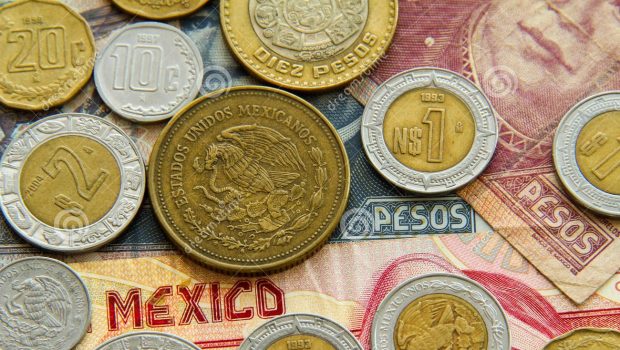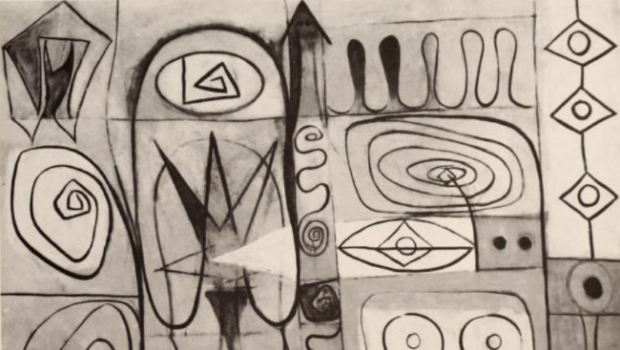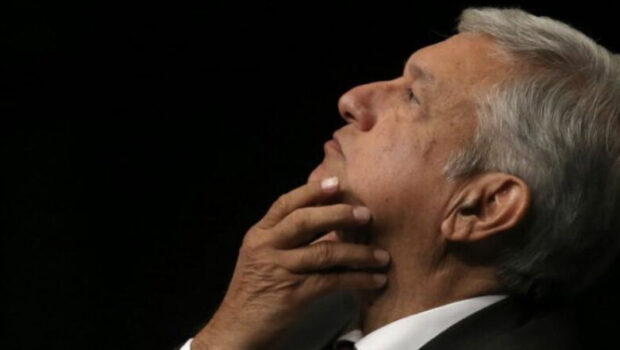Multicultural Persuasion in Mexico and the United States
La persuación multicultural en México y Estados Unidos
José Antonio Aguilar Rivera
Translated to English by Shelby D. Vincent
In a speech given in Washington, D.C. almost a quarter of a century ago, Octavio Paz transfixed the North Americans listening to him, “in order to overcome its enemies, the United States must first overcome itself: return to your origins. Not to repeat, but rather to rectify. The other and the others: internal minorities—as certainly as external peoples and nations— exist.” Paz repeated a common cliché: our countries were separated by “profound social, economic, and psychic differences.” Mexico and the United States were two different versions of Western civilization. The history of our relationship was one of mutual and persistent deception, generally— although not always—unintentional. Perhaps Paz is right, though these types of civilizing explanations are less persuasive each time. Here, however, I am interested in highlighting the coincidences, not the differences, between the Mexican and American national experiences. Both countries find themselves in a simultaneous process of introspection and redefinition of their identities. Multiculturalism has become, as much in Mexico as in the United States, a central theme of public debate. Does this term have the same meaning in both countries? Theoretically, it would appear to have semantic differences. The word “multiculturalism” is more often used in Anglo-Saxon countries, although in Mexico it is beginning to replace the expression “cultural pluralism,” which was used, according to García Canclini, during a good part of the twentieth- century. Nonetheless, the word “continues to have different applications. Americans use it to designate the—separate— coexistence of ethnic groups. Despite having preached cultural mixing and consecrating it with the expression ‘melting pot,’ identities essentially tend to elevate themselves, and community membership has changed the principal guarantee of individual rights.” According to this notion, in Latin America, “modern nations don’t form using the model of membership in ethnic communities because in many countries extensive foreign migrations intermingle. Integration of American and European ethnic groups was carried out in the model of the French Republic, and adapted more or less to historic Latin American processes.” According to García Canclini, in the Latin American countries there was an older social arrangement and more varied politico-cultural strategies to make it possible for heterogeneity to be achieved with mestizos. While in the United States, blacks were first kept as slaves and later in segregated neighborhoods, schools, and other public spaces and indigenous peoples were marginalized on reservations; in Latin American countries the extermination and the pushing aside of blacks and Indians coexisted with the politics of miscegenation and the recognition of (unequal) citizenship until the nineteenth-century, arriving at the symbolic exaltation of its patrimony in the indigenous Mexican. Racism was everywhere, but the alternatives to racism had to be differentiated… while in the United States miscegenation and hybridization had been predominately viewed as scandalous, in many areas of the Latin American and Caribbean countries, alongside the political and daily actions of discrimination, there was a positive valorization of those of mixed-race as an impulse toward modernization and cultural creativity. And “even the ‘Black American,’ just like the ‘Mexican Indian,’ were the other of the normative citizen of their respective countries; the Indian in Mexico was put in the position of being the subject of nationality, a subject that could be transformed through education and racial mixing.”
This history, that epitomizes the dominant vision, is unsatisfactory and thus needs to be revised. The comparison between Mexico and the United States highlights it’s deficiencies. To begin with, it’s inconsistent: if in Mexico the paradigm of integration was a secular republican idea, how can the ideology of miscegenation, as central to the discourse about national identity, be explained? Far from being a question of informal understandings, miscegenation was a full-blown racist theory relied on by the theorists who standardized it. This is not a minor variation of the French model. The central figure was the mestizo, not the citizen. Even though many of the noted differences are very real, others are only a matter of degree. After all, in the colonies, just as in many of the states of the American union, there was a complex system of racial classification that sought to codify the various possibilities and degrees of racial mixing. The colonial auditors wanted to know who was what and in what proportion in order to determine which rung on the social ladder they should occupy. The nineteenth century tried to eliminate that odious legacy but was in many respects only a brief interlude in our racist past. In a short time—by the end of the Porfiriato—the notion of race was back and became firmly established during the post-revolutionary period. Miscegenation, which as a social phenomenon is beneficial because it presumes that insurmountable ethnic and religious barriers do not exist for individuals who merge, is pernicious as a national ideology. In other respects, the emphasis on the cosmic race has obscured important phenomena, such as the continuation over time of minorities that don’t mix—indigenous peoples, Mennonites, Jews, etc.—and has skewed how we think about and analyze the processes of integration.
WHO WE ARE NOT
In March 2004, the journal Foreign Policy published an article written by Samuel P. Huntington, the famous political scientist from Harvard. The essay, “The Hispanic Challenge” was the teaser for Who Are We? The Challenges to America’s National Identity (Quiénes somos, Paidós, 2004), a book that came out a bit later about the supposed danger, for North American Society, represented by Mexican immigration. “By the midtwentieth century,” Huntington wrote “America had become a multiethnic, multiracial society with an Anglo-Protestant mainstream culture encompassing many subcultures and with a common political creed rooted in that mainstream culture. In the late twentieth century, developments occurred that, if continued, could change America into a culturally bifurcated Anglo-Hispanic society with two national languages. This trend was in part the result of the popularity of the doctrines of multiculturalism and diversity among intellectual and political elites, and the government policies on bilingual education and affirmative action that those doctrines promoted and sanctioned. The driving force behind the trend toward cultural bifurcation, however, has been immigration from Latin America and especially from Mexico.”
Years before, in “The Clash of Civilizations,” the controversial essay that appeared in the journal Foreign Affairs, Huntington deemed Mexico a country whose “civilization” was not Western and, moreover, critically different from that of the United States. Mexico was, like Turkey, a country “torn” between two civilizations: the “Latin American” and the “North American.” Thirty years earlier, in The Disuniting of America, one of the key books in the cultural wars of the nineties, historian Arthur M. Schlesinger Jr. warned his fellow citizens, “The separatist impulse is by no means confined to the black community. Another salient expression is the bilingualism movement, ostensibly conducted in the interests of all non-English speakers but particularly a Hispanic-American project… In recent years the combination of the ethnicity cult with a flood of immigration from Spanish-speaking countries has given bilingualism new impetus.”
In his book, Huntington declares himself, without compunction, to be a patriot and further asserts that: “All societies face recurring threats to their existence, to which they eventually succumb. Yet some societies, even when so threatened, are also capable of postponing their demise by halting and reversing the processes of decline and renewing their vitality and identity. I believe that America can do that and that Americans should recommit themselves to the Anglo-Protestant culture, traditions, and values that for three and a half centuries have been embraced by Americans of all races, ethnicities, and religions and that have been the source of their liberty, unity, power, prosperity, and moral leadership as a force for good in the world.”
In Mexico the statement elicited fiery responses. Enrique Krauze combined criticism of Huntington’s xenophobia with an uncritical appreciation of Mexican virtues, “Mexicans understand very well the advantages of racial mixing because, for centuries, their culture has been inclusive. Miscegenation is the particular genius of Mexico, a country where the Indian and the Spaniard, with their many variants, have mixed with admirable results of coexistence. Thus, with some exceptions, Mexico hasn’t had racial wars.” On the other hand, “Huntington’s obsession to preserve an identity leads to the idea of purity, and we have already seen that film: Serbes, Hutus, Tutsis, ETA, KKK. Identity fanatics.” Paidós, the publishing house that published the book in Spanish, commissioned an anthology of essays from Mexican academics in response to Huntington’s statement. More than a response to Huntington—and to the audience the Harvard professor had in mind—the book was a vehement denial directed at the convinced: the Mexicans themselves. The tone of the majority of the essays, although erudite, was not reasonable. Huntington’s book, the editor said in the first lines of the prologue, “doesn’t have the least importance as an academic work.” The majority of the authors didn’t understand two indisputable points about the book. The first is that the characteristics of Mexican immigration identified by Huntington (illegality, dimension, etc.), are evident, unlike their presumed consequences. Secondly, although the nativist statement was critically received by the academy, it gave voice to a far-reaching sentiment in North American society, hence its importance. Few of the authors understood the place Huntington’s jeremiad had in the history of the discourse on North American identity. Some texts, however, went further than indignation as they concluded that, “Huntington is above all a political strategist, a little Machiavelli dressed up as preacher.” Although few texts offered alternatives to Huntington’s reasoning and statistics, Mauricio Tenorio’s essay proposed a different interpretation for the understanding of ¿Quiénes somos? in his suggestion that Huntington didn’t invent the discourse of ideological difference, and that the philosophers of the “Mexican” and the Consejo de la Raza activists were accomplices in that symbolic maneuver.
Even critics who generally admire Huntington’s academic work recognized that the statement lacked the proverbial realism of his other books. Rather than a solid interpretation of the history of the United States, the author offered a “romantic nostalgia for Anglo-Protestant culture.” Nonetheless, Huntington’s argument seemed untimely. The nineties was the decade of the cultural wars in the United States, when fiery debates over multiculturalism consumed thousands of liters of ink and tons of paper over ten years. Meanwhile, Huntington remained silent, preoccupied with the clash of civilizations that was the world’s backdrop. Now, in his mind’s eye he believes that he finds that same clash in his own backyard. Just as the echoes of the cultural wars were dying, Huntington revives them with his academic authority. Why this tardy response?
Some clues can be found in Huntington’s unusual response to the critic Alan Wolfe in Foreign Affairs. In addition to accusing Wolfe of erroneously interpreting his work, Huntington makes some revealing clarifications. His book, he adduces, does not deal primarily with immigration. It’s central concern is “the salience and substance of American national identity.” Huntington’s angst is that of a nationalistic ideologue. Huntington recognizes that North Americans have not always accorded the same importance to their national identity relative to other identities. Before the civil war, national identity, compared to regional and local identities, was weak. On the other hand, the twentieth century was the century of “American Nationalism.” Huntington believes that the legacy of the cultural revolutions of the seventies was the weakening of national identity. Since the seventies and the civil rights movement, the importance of racial, sexual, and ethnic identities has increased relative to the national. Nonetheless, the terrorist attacks of 2001 “dramatically brought national identity back to the fore. As the profusion of flags demonstrated, Americans quickly rediscovered their nation.” Huntington is not alone in praising the useful effect of fear on patriotism. Several months after the terrorist assaults, Robert Putnam, another Harvard political scientist, wrote in The American Prospect journal, that “the closing decades of the twentieth century found Americans growing ever less connected with one another and with collective life. We voted less, joined less, gave less, trusted less, invested less time in public affairs, and engaged less with our friends, our neighbors, and even our families.” The terrorist assaults seemed to revive patriotic sentiment in the United States. “The unspeakable tragedy of September 11,” wrote Putman, “dramatically interrupted that trend. Almost instantly, we rediscovered our friends, our neighbors, our public institutions, and our shared fate.” Like Huntington, Putman celebrates this civic revival. Huntington, however, realizes that the catalyzing effect lasted didn’t last long, and after the nationalistic catharsis, North Americans have apparently gone back to bowling alone. Indeed, in the aftermath of the terrorist assaults, the salience of national identity, “has eroded; its future will depend in part on whether Americans experience or perceive major threats to their country.” National identity needed a new and lasting revitalization. This suggests a Machiavellian theory: the necessity of an exterior threat and a war in order to preserve the civic virtue of the republic. Huntington then identified a more significant threat, although its nature was more ambiguous than the assaults of the Islamic fundamentalists: the Hispanic challenge to the historic culture of the United States. Why did the culture of invading Mexican immigrants concern Huntington? The answer is that he had found there the source of a new threat. According to Huntington himself,Who Are We? is the product of the same inspiration behind his previous works, “All these books have their origins in my moral concern with major political and social problems, which often have been neglected. I then try to analyze them in strictly realist fashion.”
MORE THAN AN IDEOLOGY
Ironically, Samuel Huntington and Octavio Paz share a similar idea of national identity. Paz, for his part, magisterially described the dialectic of oppositions: North Americans are credulous, Mexicans are believers. They love fairytales and detective stories, we love myths and legends. They “are optimists; we are nihilists…North Americans want to understand, we want to contemplate. They are active, we are quietists; we enjoy our afflictions like they enjoy their inventions.” Both attitudes are, it is presumed, “irreconcilable.” How did Paz outline the contours of this difference? By comparing. Here, accuracy regarding the ontological distinction is the least of it. The important thing is that in order to arrive at it Paz pursued the dialectic of the mirror, as he suggests, in the first pages of El laberinto de la soledad [The Labyrinth of Solitude]: “I have to confess that many of the reflections that form this essay originated outside of Mexico, during a two year stay in the United States. I remember that every time I inclined toward North American life, yearning to understand it, I came face to face with my own questioning image. This image, conspicuous above the glittering depths of the United States, was the first and perhaps the most profound of the responses that country gave to my questions.
According to Roger Bartra, the myth of the national character, “would appear be without history; it would seem as if national values had fallen from the native sky to merge with the unifying substance in which the souls of all Mexicans bathe equally and forever. Essays about the Mexican national character are translations and reductions—and frequently grotesque caricatures—of innumerable artistic, literary, musical, and cinematographic works.” Huntington, on the other hand, is obsessed with the “substance” of North American national identity. That substance refers to that which North Americans believe they have in common and that which distinguishes them from other people: the English language, Christianity, religious commitment, the English concepts of the rule of law, the responsibility of rulers, the rights of individuals and the value of individualism, the work ethic and “the belief that humans have the ability and the duty to try to create a heaven on earth, a city on a hill.”
It is significant that the counter-point to these common clichés that paint the two nations as intrinsically different is the similarity of the identities that Mexico and the United States forged for themselves in the twentieth century, and that are now in crisis. Both processes of ideological construction pursued, in essence, the same objective: to integrate different groups into a coherent union. In Mexico and in the United States the twentieth century recorded the rise and the fall of two powerful imaginary nations: the cosmic race and the melting pot. Both were metaphors of integration and amalgamation. Since their founding, the Mexican and North American national states confronted the same dilemma: cultural diversity. The predicament of both nations is similar and the “master images” of national identity that they forged for themselves represent different responses to similar questions.
Faced with the dilemma of what to do with the original inhabitants, Spain and Portugal appear to have to offered a less exclusive solution than England. In the United States, from the colonial period until the end of the seventies, interracial unions were prohibited. In the Spanish colonies this strict separation didn’t exist. For Anglo Americans miscegenation represented the threat of racial contamination, whereas for many criollos, it was a way to “whiten” their countries. Contrary to what Krauze believes, racism has not been absent from Latin American nations: the Indian was always seen as inferior. Nevertheless, it’s true that this Hispanic variety of prejudice was more tolerant and less rigid than the obsession with racial purity and the strict separation between the races in North America.
To complete the comparison, it is appropriate to first point out the similarity of origin. The ideological matrix of Mexico and the United States is, with nuances, the same: liberalism. A civic principle was affirmed in the foundation of both countries. As David A. Hollinger asserts, “Civic nationalism is the variety of nationalism developed most conspicuously by the United States and France following the revolutions of 1776 and 1789, and also by the countries of Latin America who declared their independence early in the nineteenth century.” The builders of those states professed a “civic nationalism,” because the nation they were imagining was formed by citizens who were equal before the law, united by adhesive patriotic ties to a set of practices and shared political values. The political community was formed by individuals regardless of race, color, or religion.
In both cases this universalistic ideology was inadequate to suppress national identities. Mexicans and North Americans couldn’t imagine themselves simply as citizens. They required an ethnic, historic, and civic tale that would serve as the vertebral column of nationality. The civic and ethnic dimensions obeyed opposing principles and thus, from the beginning, were in conflict. In the United States, first slavery and later racial segregation denied the self-proclaimed principles found in documents such as the Declaration of Independence. In Mexico the effort to abolish race as the axis of nationality didn’t last long. The twentieth century was, almost in its entirety, a racist century and the ideology of miscegenation existed until its decline. It is evident that both nations have had difficulties of assimilating their original sins.
En un discurso pronunciado en Washington hace cerca de un cuarto de siglo, Octavio Paz le espetó a los norteamericanos que lo escuchaban: “Para vencer a sus enemigos, los Estados Unidos tienen primero que vencerse a sí mismos: regresar a sus orígenes: pero no para repetirlos sino para rectificarlos: el otro y los otros —las minorías del interior tanto como los pueblos y naciones del exterior— existen”. Paz repetía un lugar común: nuestros países estaban separados por “diferencias sociales, económicas y psíquicas muy profundas”. México y Estados Unidos eran dos versiones distintas de la civilización de Occidente. La historia de nuestras relaciones era la de un mutuo y pertinaz engaño, generalmente —aunque no siempre—involuntario. Tal vez Paz tenga razón, aunque cada vez persuaden menos este tipo de explicaciones civilizatorias. Sin embargo, me interesa señalar aquí las coincidencias, no las diferencias, entre las experiencias nacionales mexicana y norteamericana. Ambos países se encuentran en un proceso simultáneo de introspección y redefinición de sus identidades. El multiculturalismo se ha convertido, tanto en México como en Estados Unidos, en un tema central del debate público. ¿Quiere decir lo mismo este término en los dos países? En principio, parecería haber diferencias semánticas. La palabra “multiculturalidad” es más empleada en países anglosajones, aunque en México está comenzando a sustituir a la fórmula de “pluralismo cultural” que se usó, según García Canclini, durante un buen tramo del siglo xx. Sin embargo, la palabra “sigue teniendo aplicaciones distintas. Los estadunidenses la utilizan para designar la coexistencia —separada— de grupos étnicos. Pese a haber predicado la mezcla cultural y consagrarla con la expresión melting pot, las identidades tienden a esencializarse y la pertenencia comunitaria se ha vuelto la principal garantía de los derechos individuales”. Según esta idea, en América latina, “las naciones modernas no se formaron con el modelo de las pertenencias étnico-comunitarias, porque en muchos países las voluminosas migraciones extranjeras se entremezclaron. La integración de etnias americanas y europeas se hizo dentro del modelo francés de república, adaptándolo más o menos a los procesos históricos latinoamericanos”. Según García Canclini, en los países latinoamericanos hubo una mayor disposición social y más variedad de estrategias político-culturales para hacer posible que la heterogeneidad se resolviera con mestizajes. Mientras en Estados Unidos los negros fueron mantenidos primero como esclavos y luego segregados en barrios, escuelas y otros espacios públicos, y los indígenas marginados en reservaciones, en los países latinoamericanos el exterminio y el arrinconamiento de negros e indios coexistió con políticas de mestizaje desde el siglo XIX y con un reconocimiento (desigual) de su ciudadanía, que llegó a la exaltación simbólica de su patrimonio en el indigenismo mexicano. Racismo hubo en todas partes, pero las alternativas al racismo deben ser diferenciadas… mientras que en Estados Unidos el mestizaje y la hibridación han sido vistos predominantemente como escándalo, en los países latinoamericanos y caribeños, junto a las políticas y actitudes cotidianas discriminadoras, existe en amplios sectores una valoración positiva de las mezclas como impulso a la modernización y la creatividad cultural. Y “aunque el ‘negro americano’ como ‘el indio mexicano’ fueron el otro de la normatividad ciudadana de sus respectivos países, el indio en México fue ubicado como el sujeto mismo de la nacionalidad, sujeto que sería transformado por la educación y la mezcla racial”.
Esta historia, que sintetiza la visión dominante, debe revisarse pues es insatisfactoria. La comparación entre México y Estados Unidos ilumina sus insuficiencias. Para empezar, es inconsistente: si en México el paradigma de integración fue la idea laica de república, ¿cómo explicar la ideología racial del mestizaje en el centro del discurso sobre la identidad nacional? Lejos de tratarse de entendidos informales, el mestizaje era una teoría racialista hecha y derecha, que contó con teóricos que la sistematizaron. Esta no es una variación menor al modelo francés. El eje identitario fue el mestizo, no el ciudadano. Aunque muchas de las diferencias apuntadas son muy reales, otras lo son de grado. Después de todo, en la colonia, al igual que en muchos estados de la Unión americana, también existió un complejo sistema de clasificación racial que buscaba codificar las distintas posibilidades y grados de mezcla. Los censores coloniales deseaban saber quién era qué y en qué proporción para determinar el peldaño de la escala social que debía ocupar. El siglo XIX, que pretendió eliminar ese odioso legado, fue en muchos aspectos sólo un breve interludio en nuestro pasado racista. Al poco tiempo —para finales del Porfiriato— la noción de raza estaba de vuelta y acabó por afianzarse durante el periodo posrevolucionario. El mestizaje, que como fenómeno social es benéfico pues presume que no existen barreras étnicas o religiosas infranqueables para que los individuos se unan, es pernicioso como ideología nacional. En otros aspectos, el énfasis en la raza cósmica ha oscurecido importantes fenómenos, como la permanencia en el tiempo de minorías que no se mezclan: indígenas, menonitas, judíos, etc. Ha sesgado cómo pensamos y analizamos los procesos de integración.
ESOS QUE NO SOMOS
En marzo de 2004 la revista Foreign Policy publicó un artículo escrito por el famoso politólogo de Harvard, Samuel P. Huntington. El ensayo, “El reto hispánico” fue un adelanto de libro que apareció poco después, Who Are We? The Challenges to America’s National Identity (Quiénes somos, Paidós, 2004) sobre el supuesto peligro que representa para la sociedad norteamericana la inmigración mexicana. “A mediados del siglo XX”, escribió Huntington, “los Estados Unidos de América se habían convertido en una sociedad multiétnica y multiracial caracterizada por una cultura mayoritaria dominante angloprotestante (bajo la que se englobaban múltiples subculturas) y por un credo político común enraizado en esa cultura mayori- taria. Sin embargo, tal y como se estaban sucediendo los acontecimientos a finales del siglo XX, Estados Unidos iba en camino de convertirse en una sociedad anglohispana bifurcada por dos lenguas nacionales. Esta tendencia era resultado, en parte, de la popularidad de la que gozaban las doctrinas del multiculturalismo y la diversidad entre las élites intelectuales y políticas, así como de las políticas gubernamentales de educación bilingüe y acción afirmativa promovidas y sancionadas por dichas doctrinas. De todos modos, la auténtica fuerza impulsora de la tendencia hacia la bifurcación cultural ha sido la inmigración procedente de América latina y, muy especialmente, de México”.
Años antes, en el controvertido ensayo aparecido en la revista Foreign Affairs, “El choque de las civilizaciones”, Huntington había considerado a México como un país cuya “civilización” no era occidental y, por tanto, distinta críticamente de la de los Estados Unidos. México era, como Turquía, un país “desgarrado” entre dos civilizaciones: la “latinoamericana” y la “norteamericana”. Trece años antes, el historiador Arthur M. Schelesinger Jr. prevenía a sus conciudadanos en The Disuniting of America, uno de los libros clave en las guerras culturales de los noventa: “El impulso separatista no está confinado a la comunidad negra. Otra expresión notable es el movimiento bilingüe conducido ostensiblemente en aras de todos los no anglo parlantes, pero particularmente se trata de una empresa de los americanos hispánicos… En años recientes la combinación del culto a la identidad y una inundación de inmigrantes de países hispano parlantes le ha dado al bilingüismo un nuevo ímpetu”.
En su libro, Huntington se declara un patriota sin remordimientos: “todas las sociedades se enfrentan a amenazas recurrentes a su existencia. A las que, en un momento u otro, acaban sucumbiendo. Pero algunas, aun estando igual de amenazadas, son también capaces de aplazar su desaparición frenando e, incluso, invirtiendo los procesos de declive, y renovando su vitalidad e identidad. Creo que Estados Unidos es perfectamente capaz de esto último y que los estadunidenses deberían renovar su compromiso con la cultura, las tradiciones y los valores anglo protestantes a los que los norteamericanos de todas las razas, etnias y religiones, se han adherido durante tres siglos y medio, y que han supuesto la fuente de su libertad, su unidad, su poder, su prosperidad y su liderazgo moral como fuerza de bien en el mundo”.
En México el alegato produjo encendidas respuestas. Enrique Krauze mezclaba la crítica de la xenofobia de Huntington con el acrítico aprecio de las virtudes mexicanas: “los mexicanos entienden bien las ventajas de la mezcla porque, desde hace siglos, su cultura es inclusiva. El mestizaje es el genio particular de México, país donde lo indio y lo español, con sus múltiples variantes, se han mezclado con admirables resultados de convivencia. Por eso, salvo excepciones, México no ha tenido guerras raciales”. En cambio, “la obsesión de Huntington por preservar una identidad desemboca en la idea de pureza, y ya hemos visto esa película: serbios, hutus, tutsis, etarras, KKK. Fanáticos de la identidad”. Paidós, la editorial que publicó el libro en español comisionó un conjunto de ensayos a académicos mexicanos en respuesta al alegato de Huntington. Más que una respuesta a Huntington —y al público que el profesor de Harvard tenía en la mira—, el libro fue un vehemente desmentido dirigido a los convencidos: los propios mexicanos. El tono de la mayoría de los ensayos, aunque erudito, no era mesurado. El libro de Huntington, decía el compilador en las primeras líneas del prólogo, “no tiene la menor importancia como trabajo académico”. La mayoría de los autores no comprendió dos aspectos innegables del libro. El primero es que las características de la inmigración mexicana que señala Huntington (ilegalidad, dimensión, etc.) son innegables, no así sus presuntas consecuencias. En segundo lugar, el alegato nativista si bien fue recibido críticamente por la academia, daba voz a un amplio sentir en la sociedad norteamericana. De ahí su importancia. Pocos de los autores comprendieron el lugar que dentro de los discursos de la identidad norteamericana tenía la jeremiada de Huntington. Uno de ellos concluía: “Huntington es sobre todo un estratega político, una especie de pequeño Maquiavelo en traje de predicador”. Pocos textos ofrecieron estadísticas y razonamientos alternativos a los de Huntington. Sin embargo, algunos textos iban más allá de la indignación. El ensayo de Mauricio Tenorio ofrecía una clave distinta para comprender ¿Quiénes somos? El discurso de la diferencia ideológica no había sido inventado por Huntington; los filósofos de lo “mexicano” y los activistas del Consejo de la Raza eran cómplices en esa maniobra simbólica.
Aún los críticos que admiran en general el trabajo académico de Huntington reconocieron que el alegato carecía del proverbial realismo de sus otros libros. En lugar de la sólida interpretación de la historia de Estados Unidos, el autor ofrecía una “nostalgia romántica de la cultura anglo protestante”. Sin embargo, el argumento de Huntington parecería extemporáneo. La década de las guerras culturales en Estados Unidos fue la de los noventa. Ahí, durante diez años los encendidos debates sobre el multiculturalismo consumieron miles de litros de tinta y toneladas de papel. Mientras tanto, Huntington guardó silencio, preocupado por el choque de civilizaciones que tenía como escenario el mundo. Ahora, su mirada cree encontrar ese mismo choque en su patio trasero. Justo cuando se apagaban los ecos de las guerras culturales Huntington las revive con su autoridad académica. ¿Por qué esta respuesta tardía? Algunas claves aparecen en la inusual respuesta de Huntington a la crítica de Alan Wolfe en Foreign Affairs. Además de acusar a Wolfe de interpretar erróneamente su trabajo, Huntington hace algunas precisiones reveladoras. Su libro, aduce, no se ocupa centralmente de la inmigración. Su preocupación central es “la prominencia y sustancia de la identidad nacional norteamericana”. La angustia de Huntington es la del ideólogo nacionalista. Huntington reconoce que los norteamericanos no siempre le han acordado la misma importancia a su identidad nacional en relación a otras identidades. Antes de la guerra civil la identidad nacional, comparada con la regional y la local era débil. En cambio, el siglo XX fue el siglo del “nacionalismo americano”. Huntington cree que el legado de las revoluciones culturales de los sesenta fue el debilitamiento de la identidad nacional. A partir de los sesenta y el movimiento de los derechos civiles, la importancia de las identidades raciales, de género y étnicas aumentó en relación a la nacional. Sin embargo, los ataques terroristas de 2001 “regresaron dramáticamente a la identidad nacional al centro de la atención. Como demostró la profusión de banderas, los americanos rápidamente redescubrieron su nación”. Huntington no está solo en hacer las loas del efecto edificante del miedo sobre el patriotismo. Algunos meses después de los atentados terroristas, otro politólogo de Harvard, Robert Putnam, escribió en la revista The American Prospect: “las últimas décadas del siglo XX hallaron a los norteamericanos menos conectados unos con otros y con la vida colectiva. Votamos menos, nos juntamos menos, dimos menos, confiamos menos, invertimos menos tiempo en los asuntos públicos y nos involucramos menos con nuestros amigos, vecinos e incluso familias”. Los atentados terroristas parecieron revivir el sentimiento patriótico en Estados Unidos. “La indecible tragedia del 11 de septiembre”, escribió Putnam, “interrumpió esa tendencia. Casi al instante redescubrimos a nuestros amigos, a nuestros vecinos, a nuestras instituciones públicas y nuestra fe compartida”. Como Huntington, Putnam celebra ese renacimiento cívico. Sin embargo, Huntington se percató de que el efecto catalizador duró poco. Los norteamericanos, después de la catarsis nacionalista, parecían volver a jugar boliche solos. En efecto, en las postrimerías de los atentados terroristas, la prominencia de la identidad nacional “se ha vuelto a erosionar; su futuro dependerá en parte de si los americanos experimentarán o percibirán amenazas de peso a su país”. La identidad nacional necesitaba un nuevo y duradero vigorizante. Se trata de una teoría maquiavélica, sobre la necesidad de la amenaza exterior y la guerra para preservar la virtud cívica de la república. Huntington entonces ubicó una amenaza más significativa, aunque su naturaleza fuera más ambigua que los atentados de fundamentalistas islámicos: el reto hispánico a la cultura histórica de los Estados Unidos. ¿Por qué le importa a Huntington la invasora cultura de los inmigrantes mexicanos? La respuesta es que ahí ha encontrado la fuente de la nueva amenaza. De acuerdo con el propio Huntington, ¿Quiénes somos? Es producto de la misma motivación que sus trabajos anteriores: “todos esos libros tienen su origen en mi preocupación moral con grandes problemas políticos y sociales, que a menudo han sido descuidados. Trato entonces de analizarlos de una manera estrictamente realista”.
MÁS QUE UNA IDEOLOGÍA
Irónicamente, Samuel Huntington y Octavio Paz comparten una misma idea de la identidad nacional. Paz, por su parte, describió las oposiciones dialécticas magistralmente: los norteamericanos son crédulos, los mexicanos creyentes. Ellos aman los cuentos de hadas y las historias policiacas, nosotros los mitos y las leyendas. Ellos “son optimistas; nosotros nihilistas… los norteamericanos quieren comprender, nosotros contemplar. Son activos; nosotros quietistas: disfrutamos de nuestras llagas como ellos de sus inventos”. Ambas actitudes son, se supone, “irreconciliables”. ¿Cómo trazó Paz los contornos de esta diferencia? Comparando. Lo acertado de la distinción ontológica es aquí lo de menos. Lo importante es que para llegar a ella Paz siguió la dialéctica del espejo. Lo dice en las primeras páginas de El laberinto de la soledad: “debo confesar que muchas de las reflexiones que forman parte de este ensayo nacieron fuera de México, durante dos años de estancia en los Estados Unidos. Recuerdo que cada vez que me inclinaba sobre la vida norteamericana, deseoso de encontrarle sentido, me encontraba con mi imagen interrogante. Esa imagen, destacaba sobre el fondo reluciente de los Estados Unidos, fue la primera y quizá la más profunda de las respuestas que dio ese país a mis preguntas”.
Según Roger Bartra, el mito de carácter nacional “pareciera no tener historia; pareciera como si los valores nacionales hubieran ido cayendo del cielo patrio para integrarse a una sustancia unificadora en la que se bañan por igual y para siempre las almas de todos los mexicanos. Los ensayos sobre el carácter nacional mexicano son una traducción y una reducción —y con frecuencia una caricatura grotesca— de una infinidad de obras artísticas, literarias, musicales y cinematográficas”. Huntington, por su lado, está obsesionado con la “sustancia” de la identidad nacional norteamericana. Esa sustancia se refiere a lo que los norteamericanos creen tener en común y lo que los distingue de otros pueblos: el idioma inglés, el cristianismo, el compromiso religioso, los conceptos ingleses del estado de derecho, la responsabilidad de los gobernantes, los derechos de los individuos y el valor del individualismo, la ética del trabajo y “la creencia de que las personas tienen la capacidad y la obligación de crear un paraíso en la tierra, una ciudad en la colina”.
Lo notable, a contrapelo de estos lugares comunes que dibujan dos naciones intrínsecamente distintas, es la semejanza de las identidades que México y Estados Unidos forjaron para sí en el siglo XX, y que ahora están en crisis. Ambos procesos de construcción ideológica perseguían, en esencia, un mismo objetivo: integrar a grupos distintos en una unidad coherente. En México y Estados Unidos el siglo XX registra el ascenso y decadencia de dos poderosos imaginarios nacionales: la raza cósmica y el crisol. Ambos eran metáforas de fusión e integración. Desde su fundación los estados nacionales mexicano y norteamericano se enfrentaron a un mismo dilema: la diversidad cultural. El predicamento de ambas naciones es similar. Las “imágenes maestras” de la identidad nacional que forjaron para sí constituyen respuestas diferentes a preguntas similares.
Frente al dilema de qué hacer con los pobladores originales, España y Portugal, parecieron ofrecer una solución menos excluyente que Inglaterra. En Estados Unidos, desde el periodo colonial hasta finales de los sesenta, las uniones interraciales estuvieron prohibidas. En las colonias españolas no existió esta estricta separación. Para los angloamericanos el mestizaje representaba una amenaza de contaminación racial, mientras que para muchos criollos fue, por el contrario, una forma de “blanquear” a sus países. Contra lo que cree Krauze, el racismo no ha estado ausente de las naciones hispanoamericanas. El indio siempre fue visto como un inferior. Sin embargo, es cierto que esta variedad hispánica de prejuicio fue más tolerante y menos rígida que la obsesión con la pureza racial y la estricta separación entre las razas de los norteamericanos.
Para fines de la comparación conviene apuntar una primera semejanza de origen. La matriz ideológica de México y Estados Unidos es, con matices, la misma: el liberalismo. Un principio cívico se afirmó en las fundaciones de ambos países. Como afirma David A. Hollinger: “el nacionalismo cívico es la variedad de nacionalismo desarrollado de manera más conspicua por los Estados Unidos y Francia después de las revoluciones de 1776 y 1789 y, también, por los países de América latina que declararon su independencia en los albores del siglo XIX”. Los constructores de esos estados profesaron un “nacionalismo cívico”, porque la nación que imaginaban estaba formada por ciudadanos iguales frente a la ley, unidos por lazos de adhesión patriótica a un conjunto de prácticas y valores políticos compartidos. La comunidad política estaba formada por individuos sin distinción de raza, color o religión.
En ambos casos esta ideología universalista fue insuficiente para darle contenido a las identidades nacionales. Mexicanos y norteamericanos no podían imaginarse simplemente como ciudadanos. Requerían de un relato étnico, histórico y cultural que sirviera como columna vertebral a la nacionalidad. Las dimensiones cívica y étnica obedecían a principios opuestos y por ello, desde un principio, estuvieron en conflicto. En Estados Unidos, la esclavitud primero, y la segregación racial después, negaron los principios autoproclamados en documentos como la Declaración de Independencia. En México el esfuerzo por abolir la raza como eje de la nacionalidad duró bien poco. El XX fue, casi en su totalidad, un siglo racialista. La ideología del mestizaje estuvo presente hasta su ocaso. Es evidente que ambas naciones han tenido problemas para digerir sus pecados originales.











Me gusta leer https://www.literalmagazine.com porque tiene artículos realmente interesantes en él!